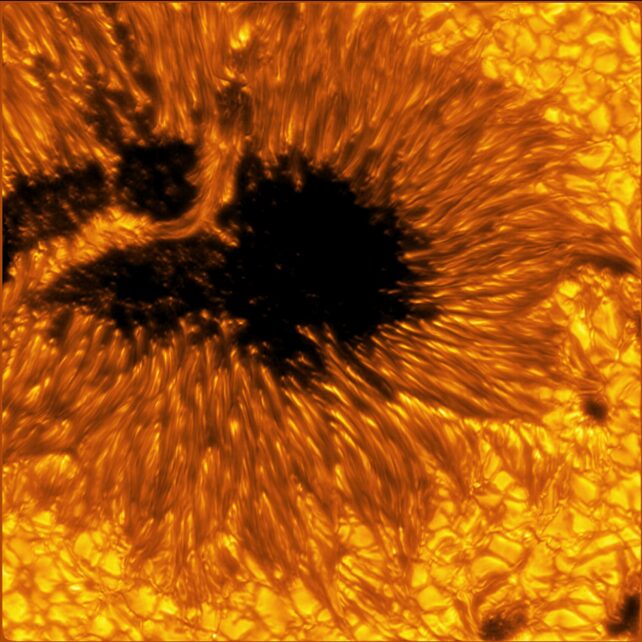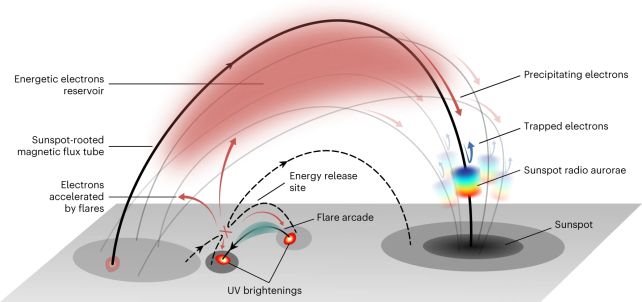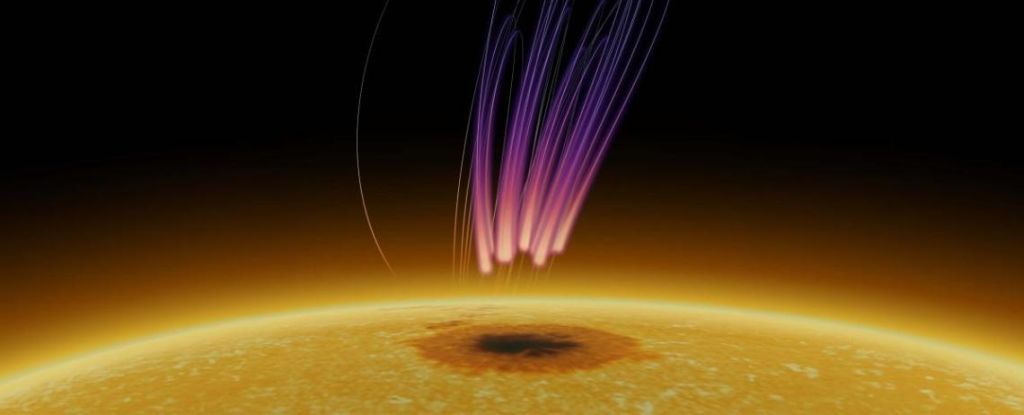A team of astronomers, led by Sijie Yu of the New Jersey Institute of Technology, has made a remarkable discovery in the atmosphere of the Sun. They recorded a unique form of long-lasting radio emission emanating from a sunspot about 40,000 kilometers (25,000 miles) above the solar photosphere.
This newly detected polarized radio burst bears a striking resemblance to an aurora, unlike the typical transient solar radio bursts that last only minutes or hours. Yu notes that this discovery has the potential to redefine our understanding of stellar magnetic processes.
Aurorae are not exclusive to Earth and have been observed on every major planet as well as the Galilean moons of Jupiter. They form when solar particles are trapped in magnetic field lines before being deposited in an atmosphere, where they interact with atoms and molecules to produce a glow visible across the skies.

Although the visible light is only part of the aurora’s spectrum, there’s also a radio component that the Sun emits. The team believes that the cooler and intensely magnetic areas of sunspots provide a favorable environment for this emission to occur, drawing parallels with the magnetic polar caps of planets and stars.
Analysis suggests that the emissions are due to a phenomenon known as electron-cyclotron maser (ECM) emission, and the team plans to study archival data to find evidence of the aurora in previous solar activity bursts. This discovery opens new opportunities for studying stellar magnetic activity and starspot behavior on distant stars.

This discovery adds to the growing body of knowledge about solar plasma and magnetic fields, offering insights into stellar magnetic processes that can extend beyond our solar system.


